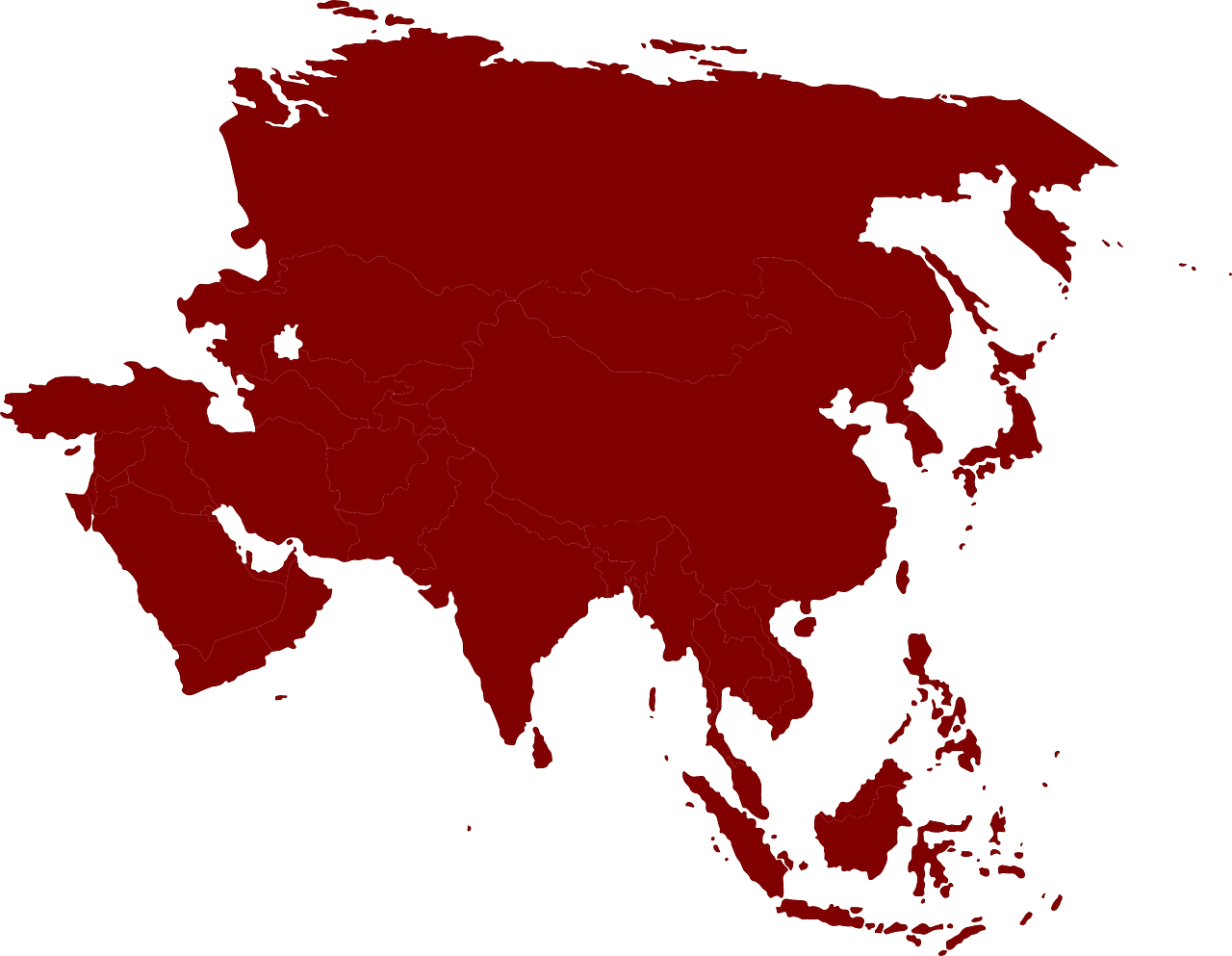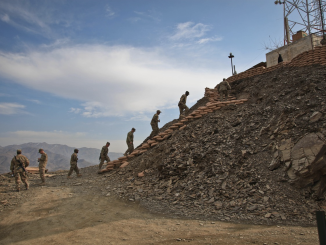 The collapse of the Soviet Union sealed the fate of the realist-bipolar world order and the United States – the leader of the so-called free world – ascended triumphantly. It asserted itself as a liberal hegemon and instituted the rules-based liberal world order, which determined global affairs for more than two decades. Nonetheless, contrary to liberal imagination – which John Mearsheimer brands as “delusions” – the rules-based order proved to be evanescent. While the US was engaged in costly wars in Afghanistan and Iraq, China – the onetime sleeping dragon – steadily transformed its latent potential into tangible economic power, and by the end of the first decade of 21st century it had elevated itself to supplant Japan as the world’s second-largest economy, preceded only by America.
The collapse of the Soviet Union sealed the fate of the realist-bipolar world order and the United States – the leader of the so-called free world – ascended triumphantly. It asserted itself as a liberal hegemon and instituted the rules-based liberal world order, which determined global affairs for more than two decades. Nonetheless, contrary to liberal imagination – which John Mearsheimer brands as “delusions” – the rules-based order proved to be evanescent. While the US was engaged in costly wars in Afghanistan and Iraq, China – the onetime sleeping dragon – steadily transformed its latent potential into tangible economic power, and by the end of the first decade of 21st century it had elevated itself to supplant Japan as the world’s second-largest economy, preceded only by America.
As China’s economy underwent astonishing growth, it began translating its economic might into military power and sought to expand its geopolitical influence, aiming to establish its own order by replacing the US-led order. Chinese aspirations were unveiled after Xi Jinping’s rise to the power. And post 2013, the dragon in effect repudiated the famous dictum of Deng Xiaoping, “hide your strength and bide your time” and embarked upon the mission to project its power beyond its borders and shores. Unsurprisingly, the upsurge of China and its grand ambitions resulted in a security dilemma for the US and, in a classic manifestation of the Thucydides Trap, catalyzed a geostrategic competition between the status-quo power and the revisionist one.
Nevertheless, even though this competition is unlikely to culminate in a direct military confrontation, an intense security competition has already begun, as evidenced by a reinvigorated global arms race in the nuclear and conventional realms. This competition, however, is not limited to military realm only and its manifestation can be discerned in the economy where a bitter trade war has just waned after the conclusion of a trade deal; in diplomacy, where both giants are vying for influence in various parts of the world; and most importantly in technology, with both countries competing for dominance in Artificial Intelligence and 5G technology.
For decades, South Asia remained an important geographical arena for great power politics. In the 21st century, the region’s geostrategic significance has just multiplied. It is home to roughly a quarter of the world’s population; two generally hostile nuclear powers evoke intermittent great power interventions; the US still maintains its two-decade-old presence in Afghanistan, which may end soon; the resource-rich Middle East and Central Asia are located next-door; revisionist China is the immediate neighbour and has direct stakes in the region; and above all, the South Asian landmass forms the littoral of the Indian Ocean, through which pass some of the world’s most crucial Sea Lanes of Communication (SLOCs).
Competing Strategies of the US and China in South Asia. At the dawn of the 21st century, the US found itself directly involved in the South Asia region. At one hand, the superpower was waging a sanguinary war against terrorism in Afghanistan that necessitated a close partnership with Pakistan; on the other, it entered into a strategic partnership with India after the two countries signed a groundbreaking civil nuclear deal in 2005. In 2011, President Obama announced the “Pivot to Asia” policy, which envisioned shifting America’s attentiveness to the Asia-Pacific – the region prophesied to host the most consequential geostrategic competition in the 21st century – after the relative oblivion of more than two decades.
However, it was in all probability too late. China – which emerged as the prime beneficiary of the rules-based international order and relished a “free ride” – had already acquired the wherewithal to challenge the liberal hegemon and redesign, if not re-mould, the international order.
In 2013, newly installed Chinese President Xi Jinping announced the Belt and Road Initiative (BRI) – a multitrillion-dollar economic plan that envisions connecting China with the rest of Asia, Europe and Africa through a network of highways, railway, and ports. Pakistan – China’s all-weather friend and geopolitical pivot on the Eurasian chessboard – became a destination for BRI’s flagship project, the China Pakistan Economic Corridor (CPEC), which contributed towards the further strengthening of the decades-old relationship between the two countries. China also reached out to the smaller countries of South Asia such as Sri Lanka, Bangladesh and the Maldives, while regional giant India – because of its geostrategic rivalry with China – continued opposing the scheme.
In pursuance of the BRI, China acquired a series of ports along the Indian Ocean littoral besides securing direct land access to the Arabian Sea via Pakistan. The projects, operational, are likely to enable China to mitigate its Malacca Dilemma and assuage its strategic vulnerabilities vis-à-vis the Indian Ocean.
Though China has been accentuating the economic outlook of BRI and negates any geopolitical angle associated with the scheme, it is irrefutable that economic influence always wields geopolitical sway and, unquestionably, the BRI has implications far beyond economics. Arguably, the BRI appears to be a grand geopolitical strategy aimed at displacing the US as the dominant power in China’s immediate neighbourhood and defying its global dominance elsewhere; thus, establishing a bounded Chinese order at the cost of the United States’ liberal order.
In response, the US intensified its “rebalancing towards Asia” efforts. In 2016, Uncle Sam sponsored a Trans-Pacific Partnership (TPP) – which was to cover 40% of world trade – and sought to strengthen regional alliances; but the election of President Trump led to a reversal in the policy. In 2017, the US withdrew from the TPP, sending shockwaves among its allies in the Asia-Pacific region and casting shadows over the liberal hegemon’s global commitments.
However, the Asia-Pacific was not a region to be overlooked so conveniently. In 2018, the Trump administration presented the Indo-Pacific Strategy, which came as another formal acknowledgement of China’s revisionist status – a threat to the rules-based international order necessitating containment at the earliest.
From a South Asian perspective, the term “Indo-Pacific” emphasized India’s augmented significance for the US in the Asia-Pacific, and further reinforced the beliefs that it was strategizing to use India as an offshore balancer to counterbalance China. Furthermore, some efforts were made to revive the Quad – a group of maritime democracies belonging to the Indo-Pacific rim – with a perceived common objective to contain China. However, as opposed to BRI – which has already made considerable progress – the US initiatives were without any real strategy, policy frameworks and implementation mechanisms, merely an aspirational set of goals.
Certainly, China’s BRI has challenged America’s long dominance of Eurasia and South Asia. The status-quo power has yet to come up with something as impressive and tangible as BRI, which – despite facing hurdles and setbacks – is flexible enough to adapt to regional requirements and accommodate the aspirations of host countries.
Implications for South Asia
A shift in the alliances and intensification in regional competition. The South Asian regional order is undergoing a transformational shift in alliances as regional powers realign with great powers according to emerging trends in the global distribution of power. Pakistan – the transactional partner of the US – has become China’s most trusted ally, while India – the declared non-aligned country during the Cold-War – has entered into a strategic partnership with the US. Afghanistan – the third-largest country in the region – is the arena for the power struggle between regional and extra-regional countries; with the imminent US withdrawal, the power struggle is only expected to intensify. On the other hand, smaller South Asian countries have a relationship with the US that is of little consequence, but are trying to maintain a delicate balance between India and China; the latter, owing to its unmatchable economic enticements, enjoys a competitive edge.
The shift in alliance and the emerging regional power structure imply that South Asia will be an important battlefield for the global geostrategic competition between the US and China. In fact, in Pakistan, this battle for economic, diplomatic and military influence is already underway. The US is hypercritical of CPEC and considers the Chinese financial ventures a debt trap for Pakistan, while China has branded CPEC as the flagship of the BRI and successful implementation of CPEC projects in Pakistan will be a major confidence booster for the same. Moreover, China – despite strategic anxieties and border disputes – has expanded its trade relationship with India and is a major economic partner of other smaller South Asian countries. Antithetically, Trump’s isolationist US – with nothing tangible to offer in the economic realm – is only circumscribed to expanding its defence cooperation with India.
Appeasement of Fascist Modi regime by the US and increased chances of military confrontation in South Asia. Under the fascist Modi regime, India is undergoing a massive transformation. Apart from pursuing divisive policies at home, Modi has been very keen to portray himself as a strongman against Pakistan. Tensions between the two arch-rivals have soared after India unilaterally abrogated Indian Occupied Kashmir’s special status; high ranking Indian officials have even hurled unveiled threats to militarily take over the part of Kashmir under Pakistani control. Given Modi’s hyper-nationalistic rhetoric, his fixation on engaging in dangerous brinkmanship to earn domestic political mileage, and threats of invading Pakistan Administered Kashmir, the risk of a major military confrontation in the disputed Himalayan region has increased manifold.
The worrying trends in India, however, fail to constrain the US against continuously appease the fascist Modi regime. Owing to economic and geopolitical expediencies, the former has turned a blind eye towards India’s bellicosity. In the absence of any international rebuke and with the US and other Western powers providing subtle support, India has emerged as more assertive and domineering than ever and poses a grave threat to the stability of the South Asia region.
After the launch of CPEC, the Pakistan Administered areas of disputed Kashmir and Gilgit Baltistan have assumed strategic significance for both Pakistan and China. The region connects the two all-weather allies and is home to various infrastructure projects planned under CPEC. This creates direct Chinese stakes in the disputed region; the recent assurance by the Chinese President to safeguard Pakistan’s “core interests” – which admittedly include Kashmir – makes no secret of its intentions. Therefore, it is safe to argue that in case India embarks upon a military adventure in Pakistan Administered Kashmir, the response may not be from Pakistan only and the situation may drift towards uncontainable limits.
Intensified Arms Race in the region. India is already the world’s second-largest importer of arms; as its geostrategic competition with China intensifies and tensions with Pakistan soar, the country is likely to further intensify its arms procurement and military modernization. Convincingly, it will create a security dilemma for Pakistan and the country will be left with no other option except to increase its own arms procurement to deny India any significant advantage. This will ensure arms race stability in the region, which forms an important component of Strategic Stability. Consequently, the country’s already crippling economy is likely to come under further pressure, and less allocation to the Human Development Index related domains means further increase in impoverishment in the world’s sixth most populous country.
An upsurge in proxy wars and increased instability in the region. Theory of Nuclear Deterrence proposes that two nuclear-armed states avoid engaging in a direct military confrontation. Consequently, nuclear weapon states became proficient at obtaining their political objectives using proxies. Although, because of the regular nuclear brinkmanship of the leaders of India and Pakistan, South Asia provides a paradoxical case study for Nuclear Deterrence, yet the countries here have also mastered the art of proxy wars and have been employing irregular warfare to inflict damage upon their adversaries.
In the wake of intensifying regional tensions and with global powers getting more involved in South Asian affairs, the fomentation of subversive activities by regional states against each other, with the patronage of global powers, is expected to further intensify; and Pakistan can be the most immediate victim. Given the common interest of the US and India to disgruntle Chinese designs linked with CPEC, connivance between the two strategic partners to foment destabilization inside Pakistan is the most opportune strategy to counter growing Chinese influence.
The trend of proxy wars is also expected to escalate in war-torn Afghanistan. In addition to the US and China, India and Pakistan – which have long been fighting an undeclared indirect war for influence in the country – are likely to further intensify their exertions once a power vacuum is created after the proposed US withdrawal.
Ironically, if Pakistan and China decided to respond to India in the same coin and launch schemes to exploit the fault lines within Indian society – which are deepening owing to divisive politics played by Modi’s regime – it can lead towards an ultimately nightmarish scenario and the whole region may be propelled into the whirlpool of instability.
Ever decreased chances of regional connectivity. South Asian countries have tremendous economic potential. If Pakistan and India can sort out their differences and become more economically integrated, it can not only reduce the risk of wars but can also usher into a new era of economic progress and advancement. However, given the imminent scenario in which geopolitics is all set to dominate the region, chances of any regional economic interconnectivity are likely to diminish further, and create an appalling scenario for the region’s impoverished masses.
Conclusion. South Asia is all set to become one of the most important battlefields for the emerging geostrategic competition between the US and China. It is already home to ever-hostile nuclear-armed neighbours and the emergence of new great power politics in the region is likely to lead towards further instability. Add to the precariousness is the rising fascism in India and, due to India’s strategic efficacy, America’s continuous policy of appeasing the fascist Modi regime. Absolute impunity for its tyrannical moves and hysteria has rendered India ever more assertive and aggressive, and there are chances that the country may instigate a war over the disputed region of Kashmir, which can escalate to cataclysmic levels. Soaring regional tensions are probable to enhance the Modi regime’s romance with an arms buildup, and an unrestrained arms race in the conventional and nuclear domains is very much on the cards. Furthermore, soaring geopolitical tensions leave no space for toning down the trend of proxy wars; once adversarial countries are bent on exploiting each other’s fault lines, it will just augment the instability and volatility in the region. Increased instability and the ratcheting-up of hostilities are likely to condense the chances of any economic cooperation between India and Pakistan, and South Asian economic integration would remain a dream unfulfilled.
![]()




Be the first to comment